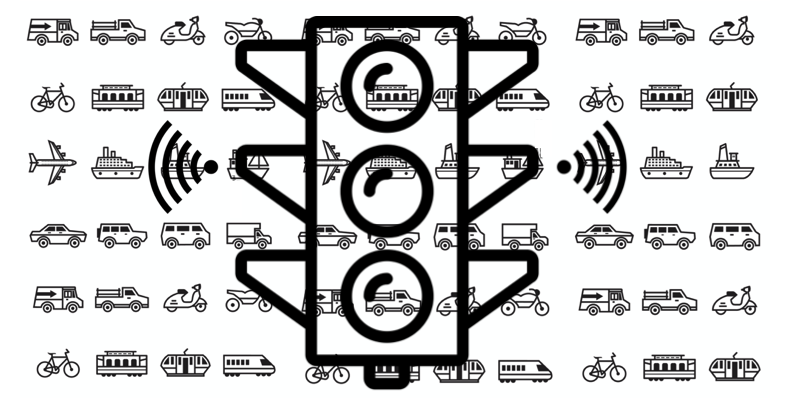
At least once a week there’s a traffic accident involving an emergency service vehicle, such as a fire engine or an ambulance. Especially at intersections, it is a scare every time you have to slow down in front of the green traffic light because a car with a siren and blue flashing light is approaching. I am always happy and relieved when that moment is over and everyone can move on normally.

Fortunately, the Talking Traffic platform has now developed a solution for this. This Dutch initiative makes it possible for road users to communicate with the road environment via the internet using their mobile phones or another device. For example, an ambulance can automatically set one traffic light to green and the other to red. Or a large truck can generate its own wave of green lights. A full truck that has to slow down and accelerate again can easily cost an extra liter of diesel.
This technique may seem a bit future-like, but it already exists. After quite a few years of development and testing, partly by the Helmond Automotive Campus, the system is now being rolled out. In the Netherlands, there are now more than 700 smart traffic lights, also known as intelligent traffic control systems (iVRIs), that know which cars, cyclists, and buses are heading towards them if they have activated their smart app. By dynamically controlling the traffic lights, traffic flows can be coordinated more efficiently.
The municipality of Deventer is at the forefront, with over fifty intelligent traffic control systems. In addition, the branch association Ambulance Care Netherlands (AZN) recently decided to connect all ambulances in the Netherlands to the Talking Traffic initiative. This means that in many places the ambulances will be able to cross intersections safely. And possibly because of this, they will be able to drive faster and thus save more lives. The expectation is that the other emergency services will follow in due course.
This development, which you could call the Internet-of-Things of roadside systems, opens up unprecedented possibilities. Eventually, you will be able to see in how many seconds a traffic light will change color, or what other problems are to be expected on your route – all from within your own car. Cycling can be made safer by creating green waves if cyclists ride in sufficient numbers on the same stretch. And as mentioned earlier, trucks could save a lot of fuel with an automatic green wave. If you link this kind of system to the autonomous functions in a vehicle, then car platooning will be very easy to imagine.
That smart traffic light is a beautiful Dutch development, just like the smart charging station. In any case, you will never have to worry about a blue light passing through the red light again.
Maarten Steinbuch and Carlo van de Weijer are alternately writing this weekly column, originally published (in Dutch) in FD. Did you like it? There’s more to enjoy: a new book with a selection of these columns has just been published by 24U and distributed by Lecturis.
